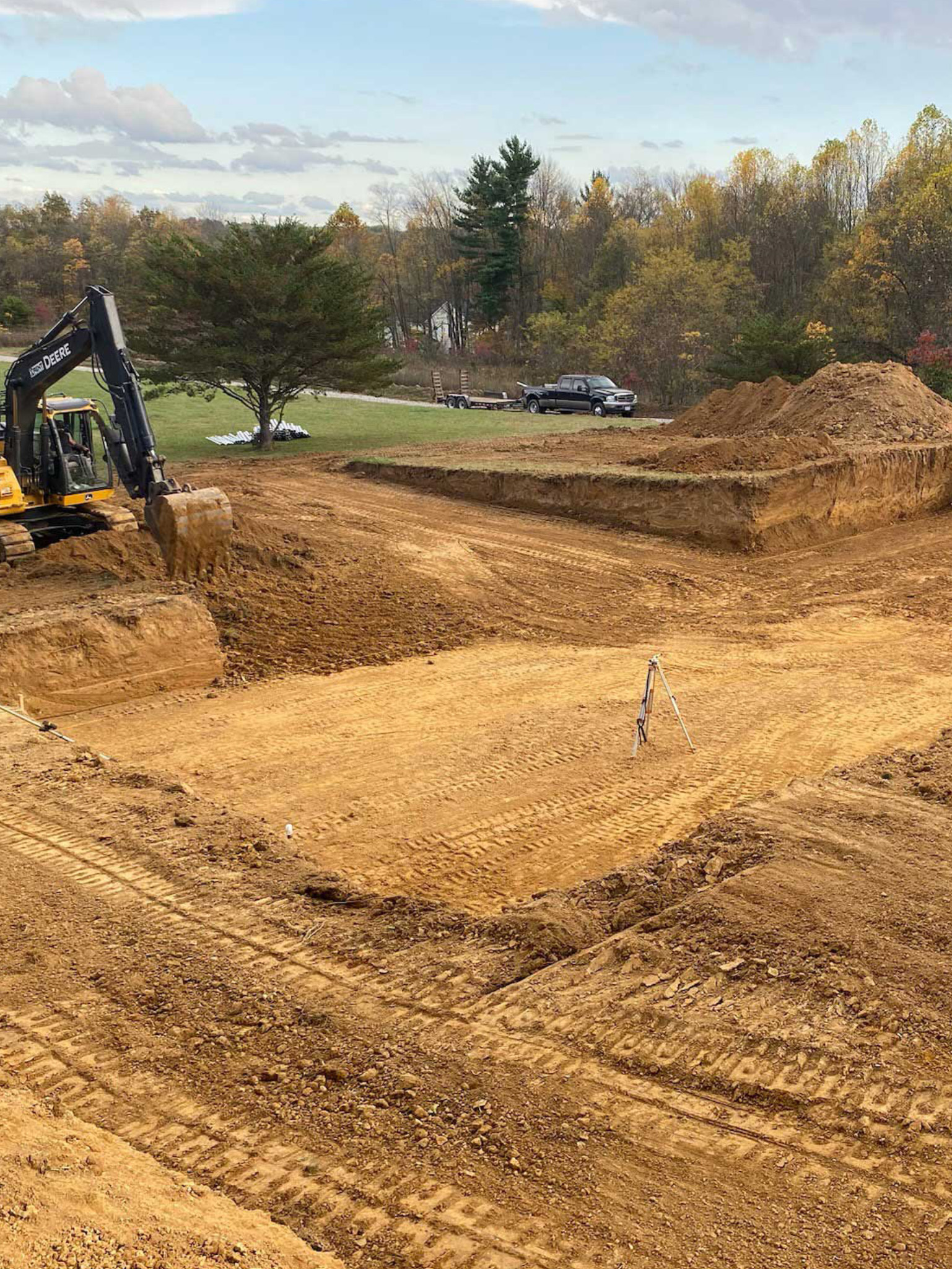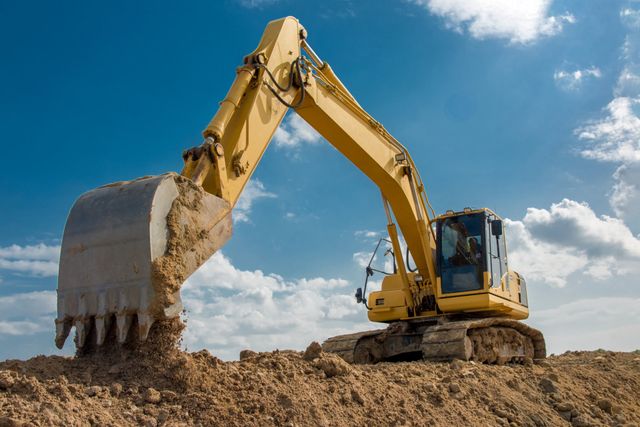Specialist Septic Ohio - Relied On Septic System Specialists in Ohio
Specialist Septic Ohio - Relied On Septic System Specialists in Ohio
Blog Article
Introducing the Art of Excavation: Pro Tips for Safe and Effective Excavating
As soil is turned and planet is moved, the details of excavation reveal themselves, demanding a keen understanding of devices, soil make-up, security methods, and ecological considerations. The proficiency needed to navigate these components efficiently can indicate the distinction in between a successful excavation job and a potential calamity.
Significance of Correct Tools
To make sure the safety and effectiveness of any type of excavation task, utilizing the appropriate tools is extremely important. Excavation projects differ in scope and complexity, varying from little residential landscaping work to large construction endeavors.
Excavators are basic pieces of equipment in any kind of excavating operation. These flexible makers can be found in different sizes to match various job needs. Tiny excavators are optimal for smaller jobs, while larger excavators take on more extensive tasks successfully. Backhoes are an additional necessary devices kind, combining the functions of a loader and an excavator in one maker. They are useful for tasks needing flexibility and maneuverability.
Besides excavators, other vital equipment includes dump bulldozers, trenchers, and vehicles. Dispose trucks are crucial for removing and transferring excavated products, while trenchers are utilized for excavating deep and narrow trenches. Bulldozers stand out in tasks that need pushing huge amounts of soil or particles. By buying the appropriate tools, excavation projects can be completed securely, promptly, and with precision.
Recognizing Soil Make-up
An extensive understanding of dirt composition is fundamental for performing excavation jobs with accuracy and safety. Comprehending the various types of dirt is vital as it directly affects excavation methods, equipment selection, and general job efficiency. Dirt structure usually includes 4 major components: sand, silt, clay, and organic matter. Each part has distinct buildings that affect exactly how dirt reacts to excavation procedures.
Silt bits are smaller than sand yet bigger than clay, supplying modest drainage and cohesion. Organic matter, such as decaying plant product, influences dirt fertility and security.
Prior to beginning excavation, conducting dirt tests to establish its composition and features is crucial. This info helps in choosing the appropriate tools, executing precaution, and developing excavation methods customized to the details dirt problems - septic ohio. By comprehending soil make-up, excavation experts can improve project results while guaranteeing safety and adherence to best techniques
Precaution and Methods
Recognizing dirt composition is the cornerstone whereupon security procedures and procedures for excavation tasks are built, ensuring the health of employees and the success of the undertaking. There are numerous vital measures that should be executed to minimize dangers and stop crashes. when it comes to safety throughout excavation.
Primarily, before any digging starts, an extensive evaluation of the website ought to be conducted to determine any potential risks such as underground energies, unstable dirt conditions, or close-by frameworks that might position a danger. It is vital to have a skilled person manage the excavation process to ensure that all safety procedures are followed purely.
Furthermore, all employees involved in the excavation must be correctly learnt risk-free excavating techniques and the correct procedure of devices. Personal safety equipment (PPE) such as hard hats, high presence clothing, handwear covers, and safety boots must be put on at all times to decrease the threat of injuries. lancaster excavation. Regular safety and security conferences and toolbox talks should also be performed to maintain all workers notified regarding prospective dangers and strengthen risk-free job methods. By sticking to these safety actions and methods, excavation jobs can be completed efficiently and without incident.
Reliable Excavation Preparation
When getting started on an excavation task, careful planning is vital to guarantee effectiveness, safety and security, and successful results. Reliable excavation planning involves a number of crucial actions that are vital for the smooth implementation of the project.
As soon as the website analysis is full, the following step is to produce a clear timeline and routine for the excavation activities. This consists of establishing the sequence of tasks, devices demands, and workforce allocation. Correct organizing assists avoid hold-ups and guarantees that the job remains on track.

Moreover, communication among all employee is extremely important during the planning stage. Clear instructions, regular updates, and efficient coordination are important for an effective excavation task. By investing effort and time in thorough preparation, excavation teams can dramatically enhance performance, decrease risks, and accomplish successful outcomes.

Managing Ecological Factors To Consider
With raising focus on environmental Get More Info sustainability in construction methods, managing ecological considerations has come to be an important element of excavation projects. Excavation activities have the prospective to affect the surrounding setting via dirt disintegration, sediment runoff, environment disruption, and contamination of water resources. To alleviate these risks, it is vital to apply finest techniques that focus on environmental security.

Furthermore, proper waste monitoring is vital to avoid dirt and water contamination. Applying treatments for the disposal of hazardous products, recycling of waste materials, and decreasing using unsafe chemicals can substantially reduce the environmental influence of excavation tasks. By incorporating these methods right into excavation preparation and implementation, building and construction business can make sure that their jobs are not only secure and efficient however likewise ecologically accountable.
Conclusion
In verdict, grasping the art of excavation calls for a detailed understanding of appropriate equipment, dirt make-up, precaution, and reliable preparation. By adhering to these standards and considering environmental aspects, excavations can be carried out safely and effectively. It is vital to focus on safety and efficiency in every excavating job to ensure effective outcomes.
As dirt is turned and planet is moved, the complexities of excavation expose themselves, requiring a keen understanding of equipment, soil structure, security protocols, and ecological factors to consider.To make sure the safety and effectiveness of any excavation task, making use of the suitable devices is critical.An extensive grasp of More Info dirt structure is essential for implementing excavation projects with accuracy and security. Recognizing the various types of soil is vital as it directly impacts excavation approaches, devices selection, and general task efficiency. By comprehending soil composition, excavation experts can enhance project results while ensuring security and adherence to ideal methods.
Report this page